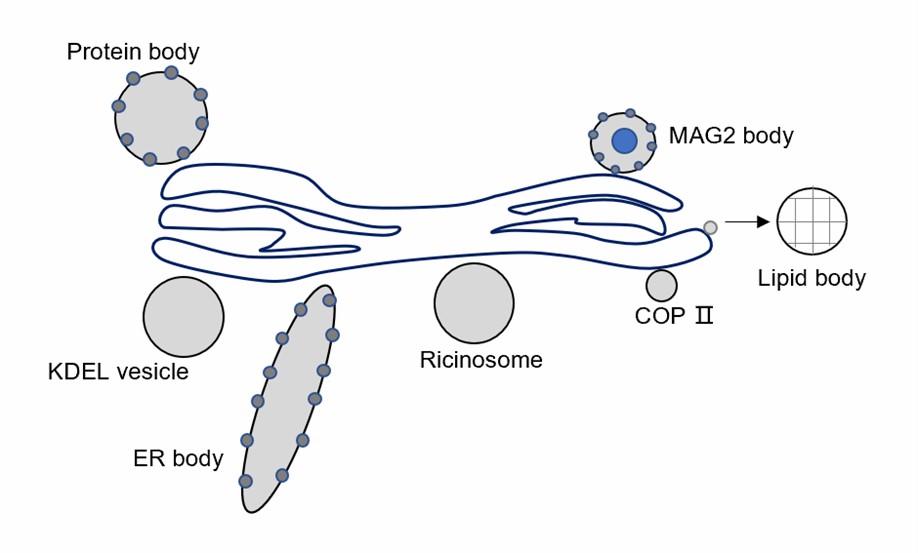Functional Analysis of Plant Endoplasmic Reticulum Derived Structures
Endoplasmic reticulum (ER) is a part of the inner membrane system of cells. In the long-term evolution process, the ER of plant cells becomes more complex and has greater flexibility, enabling plants to cope effectively with internal and external environmental stresses. The ER of plant cells has many different kinds of cellular structures, mainly storing a large number of proteins that are constantly synthesized by the ER.
Lifeasible, as a leading global company, is committed to helping our customers achieve effective and successful research. We provide functional analysis of plant endoplasmic reticulum derived structures, including Precursor-accumulating (PAC) vesicles, Protein body and MAIGO2 (MAG2) body, ER body, HDEL vesicles and others. In addition, we deliver reliable results and reports on time to our customers worldwide.
- PAC vesicle is an ER-derived structure found in developing pumpkin seeds. It is responsible for the storage and transport of a large number of proteins. The diameter of PAC vesicle is 200 - 400 nm. Similar structures were also found in castor bean, soybean, and rice.
- Lifeasible helps the client study the formation of this structure in different organs, such as seeds, hypocotyls, roots. In addition, we develop a protocol for functional analysis in the case of soybeans.
 Fig.1 Derived structure of endoplasmic reticulum.
Fig.1 Derived structure of endoplasmic reticulum.
- Seed storage proteins are stored in the Protein body (PB), mainly the soluble protein stored in cereal crops such as maize and rice.
- We provide the process of protein body formation in major food crops, such as rice, wheat, maize, etc. In addition, we also provide a mature protein body function analysis system.
- MAG2 body is a newly discovered class of cellular structures that contain storage protein precursors and endoplasmic reticulum molecular chaperones, including immunoglobulin heavy chain-binding protein and protein disulfide isomerase.
- We use mutation and other means to help customers analyze the function of MAG2 body.
- The ER body is a spindle-shaped, bulky structure, about 10 μm long and 1 μm wide. It is also a storage and transport structure for hydrolases enzymes.
- We provide ER body component analysis, function analysis, and regulatory mechanism analysis to illustrate the functions of ER body in plant defense.
- Higher plants contain their unique hydrolases, the C-terminal of which contains KDEL signal, and these hydrolases are involved in the degradation of seed storage proteins.
- We analyze the function of this kind of KDEL vesicle in plants by expression analysis of KDEL sequence deletion fragments, immunocytochemical analysis, and other solutions.
- Ricinosomes are round, about 0.9 μm in diameter, with a monolayer membrane structure, and the surface of the membrane is covered with ribosomes. They store and carry the Papain type cysteine endonuclease (Cys-EP) and play a role in programmed cell death.
- We perform functional analysis by means of cytochemical analysis, protein sequence analysis, and so on.
Lifeasible is always devoted to providing high-quality and satisfactory service to our customers. If you are interested in our services or have any questions, please feel free to contact us or make an online inquiry.
For research or industrial raw materials, not for personal medical use!
 Fig.1 Derived structure of endoplasmic reticulum.
Fig.1 Derived structure of endoplasmic reticulum.